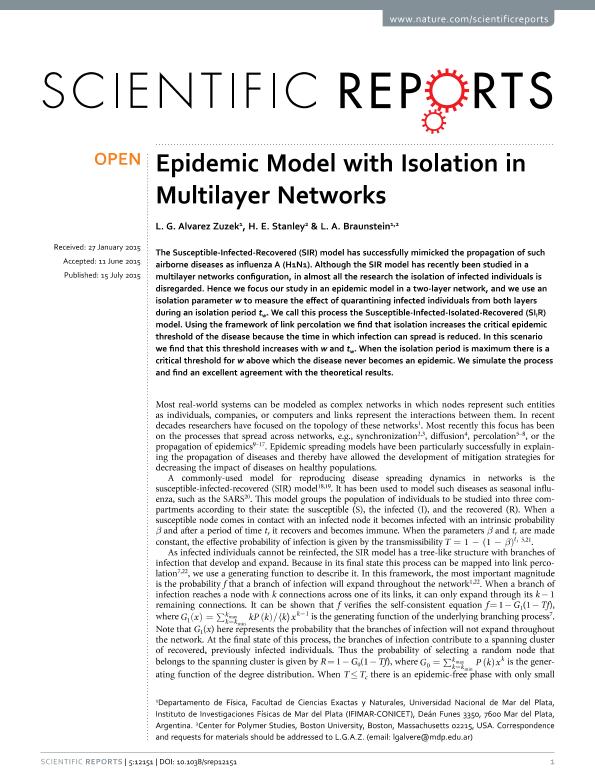Artículo
Epidemic model with isolation in multilayer networks
Fecha de publicación:
07/2015
Editorial:
Nature Publishing Group
Revista:
Scientific Reports
ISSN:
2045-2322
Idioma:
Inglés
Tipo de recurso:
Artículo publicado
Clasificación temática:
Resumen
The Susceptible-Infected-Recovered ($SIR$) model has successfully mimicked the propagation of such airborne diseases as influenza A (H1N1). Although the $SIR$ model has recently been studied in a multilayer networks configuration, in almost all the research the isolation of infected individuals is disregarded. Hence we focus our study in an epidemic model in a two-layer network, and we use an isolation parameter $w$ to measure the effect of quarantining infected individuals from both layers during an isolation period $t_w$. We call this process the Susceptible-Infected-Isolated-Recovered ($SI_IR$) model. Using the framework of link percolation we find that isolation reduces the critical epidemic threshold of the disease because} the time in which infection can spread is reduced. In this scenario we find that this threshold increases with w and t_w. When the isolation period is maximum there is a critical threshold for $w$ above which the disease never becomes an epidemic. We also find that epidemic models, like $SIR$ overestimate the critical epidemic threshold. We simulate the process and found an excellent agreement with the theoretical results.
Palabras clave:
Complex Netorks
,
Multilayer Networks
,
Epidemic Models
,
Percolation
Archivos asociados
Licencia
Identificadores
Colecciones
Articulos(IFIMAR)
Articulos de INST.DE INVESTIGACIONES FISICAS DE MAR DEL PLATA
Articulos de INST.DE INVESTIGACIONES FISICAS DE MAR DEL PLATA
Citación
Alvarez Zuzek, Lucila Gisele; Stanley, H. E.; Braunstein, L. A.; Epidemic model with isolation in multilayer networks; Nature Publishing Group; Scientific Reports; 5; 1215; 7-2015; 1-7
Compartir
Altmétricas




